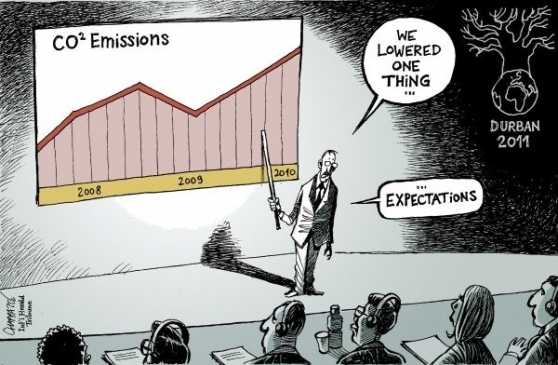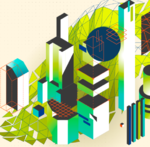INTIATIVES
S2030 Presentation at the Esri GeoDesign Summit 2021:
Enabling Sustainability Success with Regenerative Regional GIS
- Delivered Wed. Feb 10, 2021, 9:40 to 10a.
- Proceedings (link), List of presentations with links to slide decks & videos.
- YouTube Play list of all Presentation Recordings (link).
- The recording for the S2030 Session, Enabling Sustainability Success, is here (Link), and that of the Slide Deck is here (link).
- Esri GeoDesign Summit 2021 Home page, click the Wednesday Tab, page down to the 9:40a for links to the Session Description, Bio for Scott Edmondson and for Bio Christine Ma.
Summary
In this year of the 51st Earth Day celebration (April 21, 2021), humanity finds itself in trouble. The IPCC predicts only 10 years remaining to make substantial progress on reversing climate change to avoid unrecoverable effects. Yet, climate change is only the visible tip of the larger, and relatively invisible, unaddressed, and more fundamental sustainability challenge.
Our sustainability response has progressed through a few modes since the first Earth Summit, Rio92. As laudable as our response has been, it seems to be stuck in the mode of too little too late for success in time. True or false? Why/why not? If so, what are the options?
This twenty-minute presentation illuminates three emerging innovations of practice that hold the promise of success in time: (1) a shift to a regenerative systems sustainability approach, (2) the use of powerful new systems simulation planning technology that enables a new planning practice of urban and regional systems planning, and (3) using connected technology that creates a global GIS system that will provide the capacity for intelligent sensing and smart systems problem resolving.
Introduction
This web page presents additional resources on the session topic for a deeper understanding.
Please email scott-e@sustainability2030.com for questions on the session and Christine Ma (CMa@esri.com) for questions on ArcGIS Urban.
Regenerative Systems Sustainability
Resources Sheet -- Regenerative Sustainability & Urbanism (link). Summary:
- Webinars (from APA National Conference, SF, 2019)
- Articles: A Summary of Regenerative Urbanism & Sustainability Planning
- Regenerative Urbanism: The Meaning, Challenge, and Value (4p article, summary 800 words)
- Regenerative Urbanism – An Introduction & Bibliography (link)
- Planning Research Studies
3D Geospatial Systems Planning & Design
Three of the leading spatial modeling platforms available now for the land use, the urban-regional economy, and transportation are ArcGIS Urban, UrbanSim, and BEAM (under development).
ArcGIS Urban is transforming urban planning and design. Issues like housing availability, sustainability goals, and economic changes are compelling cities to better plan for the future. ArcGIS Urban enables planners and design professionals to collaborate across teams with a web-based 3D application that supports scenario planning and impact assessment. ArcGIS Urban enables the digital transformation of city and regional planning to encourage collaboration with community stakeholders and help all groups work toward a more sustainable future. Explore these product pages to begin, for additional resources, and for free trial (link).
UrbanSim is a dynamic urban system simulation platform for supporting planning and analysis of urban development, incorporating the interactions between land use, transportation, the economy, and the environment. It uses data science, simulation, and visualization to learn from the past, inform the present, and shape the future of communities (home link, overview & open source urban data science tool kit link).
BEAM is the next-generation collaborative research project being led by Berkeley National Laboratory and is partially funded by USDOE, and which a DOE core capability. BEAM is developing an interactive modeling framework for Behavior, Energy, Autonomy, and Mobility (e.g., BEAM link). It extends the Multi-Agent Transportation Simulation Framework (MATSim) to enable powerful and scalable analysis of urban transportation systems.
Scenario Planning
The APA presents a rich summary of scenario planning: short history, best practices, leading platforms, and resources (link).
The Lincoln Institure of Land Policy runs a Consortium for Scenario Planning (link) that is a community of practice for practitioners, including access to technical assistance, educational resources, and a network of fellow innovators. Their book list (link) is impressive, as is the whole intiative and site. Finally, one classic introduction is their Policy Focus Report: Opening Access to Scenario Planning Tools (link).
Regional GIS Infrastructure (technology & decision/planning process)
The possibility of regional GIS arises from the expansion of connectivity in the relatively rapid evolution of computing systems over the past 20+ years from desktop to intranet to internet as the interoperatbilty of data and software has increased. This development has spurred on the possibility, demand for, and increasing practice of multi-stakeholder collaboration across the whole urban planning (and other industry) workflow. In addition, it is built upon the new 3D Systems Modeling capabilities emerging, as discussed above.
Increasing connectivity & interoperability creates the potential for advances in practice beyond the parcel, project, or silo, originally with an expert or team conducting single analyses for senior decisionmakers of one organization, to now, many stakeholders collaborating on multiple analyses across many organizations, jurisdictions, and workflows with data and analysis going easily and seamlessly in two directions--potentially! THAT is the promise. To make it a reality with require intentional development from analyst, to organizations, to jurisdictions, to industry leaders as best practices become infused across the whole workflow, thereby enabling the potential new practice to emerge. In this new practice of systems planning, design, and management, decisions are based on systems solutions that meet multiple policy goals and systems performance parameters reflecting system requirements and stakeholder aspirations for systems livability, sustainability, and inclusive community well being and prosperity based on the best data, evidence, and logic available.
Regional GIS, and a global system of connected regions in combination the shift to a regenerative sustainabiltiy approach and 3D Systems Modeling enables the systems planning capacity for us to transform humanity's global human footprint quickly, and therefore, our sustainability and prosperity, i.e., sustainability success in time. The following resources provide a deeper glimpse into this idea and its potential, particularly the two links to the Esri UC Plenary Clips of Jack Dangermond describing his observation of an incidentally emerging global GIS infrastructure from the increaseing interconnectivity of data, hardware, software, and practice.
- Esri UC 2020 Plenaries (link, and then select the video clip entitled, "GIS –Interconnecting Our World, Jack Dangermond (2 of 4))"
- Esri UC 2019 Plenaries (link, and then select the video clip entitled, "GIS: The Intelligent Nervous System").
- York Regional GIS Case & Award -- Summary (link)
- York Regional GIS Case ArcUser Article (link)
- SCAG Regional Data Platform Project (link) and StoryMap Description (link)
Deeper Dive
Explore These Resources for a Deeper Dive into Regenerative Sustainability & Regenerative Urbanism
- APA-SCD WEBINAR #9: “LIVING COMMUNITIES” November 17, 2016
o Webinar recording (YouTube), Slide Deck (PDF), Website Description (scroll down)
· APA-SCD WEBINAR #8: “REGENERATIVE URBANISM RISING: NEXT-GENERATION PRACTICE” July 15, 2016. Webinar recording (YouTube), Slide Deck (PDF), Website Description (scroll down)
· The Biophilic City Network, https://www.biophiliccities.org/, Blog Post: San Francisco - A Partner City (link)
· Pre-Habitat III APA/UCB Panel Discussion: Habitat III—Implications for Local Planning. The goal of the New Urban Agenda is to foster transformations across the urban world. The panel discussed the NUA and its new Sustainable Development Goals. It explored the implications for local planning practice and global sustainability. Web Page & link to video recording: https://norcalapa.org/2016/09/event-ucpapa-habitat-3-implications-local-planning/
· Article on application of 3D Urban Systems Modeling & Regional GIS, “With Space at a Premium, San Francisco Gets Creative,” Scott Edmondson, WhereNext Magazine, Esri, August 11, 2017 (link: https://www.esri.com/about/newsroom/publications/wherenext/space-premium-san-francisco-gets-creative/)
· Opinion, Marrying GIS and BIM tech can connect New York's plans to its people, SmartCitiesDive, Nov. 6, 2019. https://www.smartcitiesdive.com/news/marrying-gis-and-bim-tech-can-connect-new-yorks-plans-to-its-people/566732/
- Article, “New GIS: The Beginning of Urban-Regional Systems Planning & Management,” Scott T. Edmondson, AICP, ISSP-SA. Planning & Technology Today Newsletter, No. 116, Winter 2017, p18, APA Planning Technology Division (https://www.planning.org/divisions/tech/).
- Article, “The Essence of GeoDesign,” Bill Miller, APA Technology Division Newsletter, 2017-18 Fall-Winter, No.116 p. 5.
- UrbanSim Articles:
- Waddell, Paul, "UrbanSim, Modeling Urban Development for Land Use, Transportation, and Environmental Planning," APA Journal, Summer 2002, Vol 68 No 3, p 297 (link)
- Waddell, Paul, "Integrated Land Use Transportation and Modeling: Addressing Challenges in Research & Practice," Transport Reviews, Vol. 31, No. 2, 2009-229, March 2011. (link)




